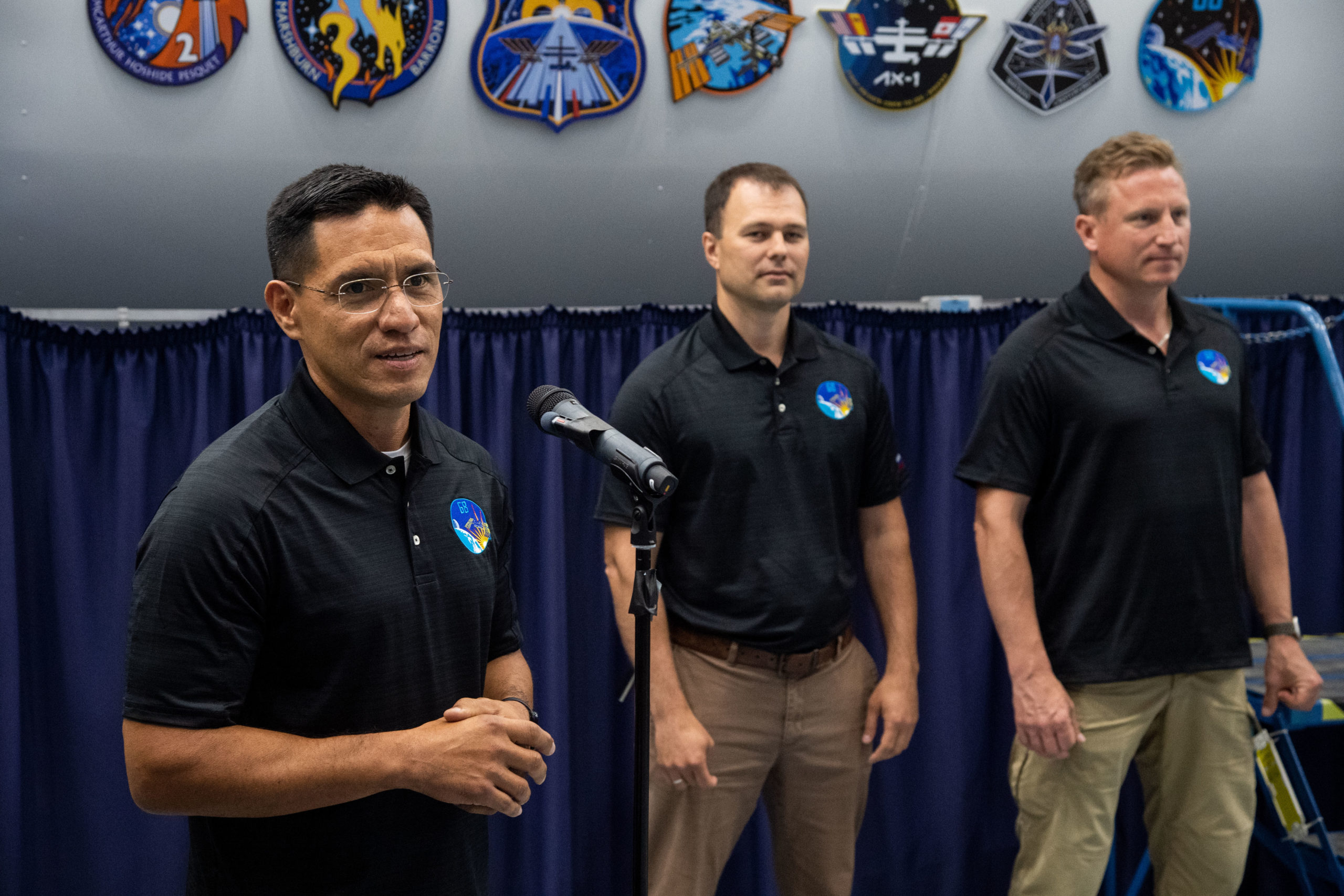
Only a day remains before Frank Rubio becomes the first NASA astronaut to launch under the terms of the long-awaited U.S./Russian integrated crew agreement. Rubio, a 46-year-old Army physician and helicopter pilot of Salvadoran heritage, will launch aboard Soyuz MS-22 from the Baikonur Cosmodrome in Kazakhstan on Wednesday, shoulder to shoulder with Russian cosmonauts Sergei Prokopyev and Dmitri Petelin.
Liftoff is targeted for 9:54 a.m. EDT (6:54 p.m. local Baikonur time) on Wednesday, 21 September. An on-time launch will see Prokopyev, Petelin and Rubio dock at the Earth-facing (or “nadir”) port of the International Space Station (ISS) about three hours and two orbits later, to kick off a six-month stay on the sprawling orbital outpost.
The Soyuz MS-22 spacecraft—the barebones design of which extends back almost six decades to the Soviet era, having first carried humans to orbit in April 1967—arrived at Baikonur for storage last December. Over the summer months, customary pre-flight testing of the spacecraft entered high gear and Soyuz MS-22 was fueled on 8 September.
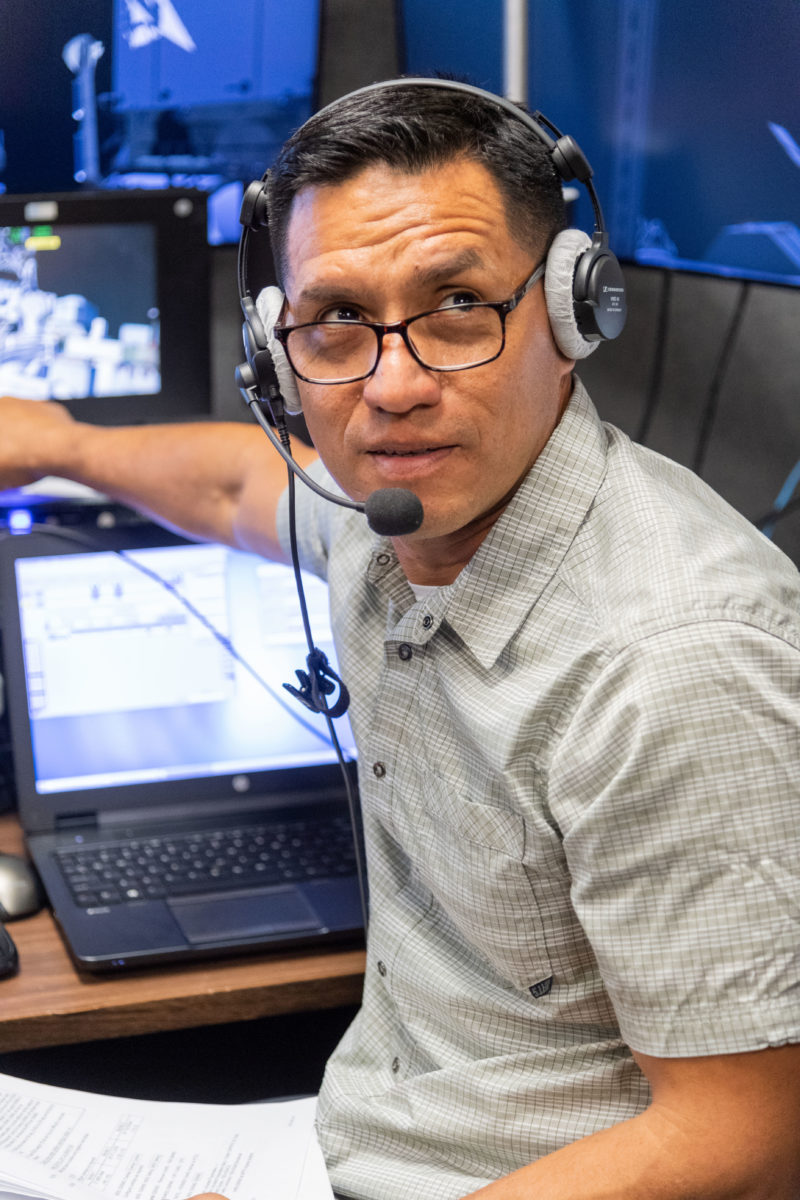
It was then mounted atop its Soyuz-2.1a booster and rolled out to Baikonur’s Site 31/6 last Sunday to commence final launch preparations. The crew composition for this mission has been a source of great speculation, with the rumor mill rife late last fall that Soyuz MS-22 and SpaceX’s Crew-5 might mark the start of the long-awaited integrated crew agreement between the United States and Russia.
Integrated crew capability has long been touted as inherently preferable by the International Partners (IPs). It envisages one U.S. astronaut aboard each Russian Soyuz and one Russian cosmonaut aboard each SpaceX Crew Dragon, with an expectation that Boeing’s CST-100 Starliner will also fold into the agreement in due course.
This will ensure the continuous, year-round presence of at least one U.S. and at least one Russian systems specialist on the station’s U.S. Operational Segment (USOS) and Russian Operational Segment (ROS). And in turn this is expected to guard against the possibility that a delayed launch or landing or a premature return to Earth of one of either nation’s spacecraft could leave one of the partners with no representative on the ISS.
Such an eventuality has never yet come to pass. Since November 2000 and the arrival of Expedition 1, there has always been at least one Russian and at least one American on board. In the station’s first couple of years, long-duration crews were typically rotated via the Space Shuttle, with short visiting missions switching Soyuz “lifeboats” every six months.
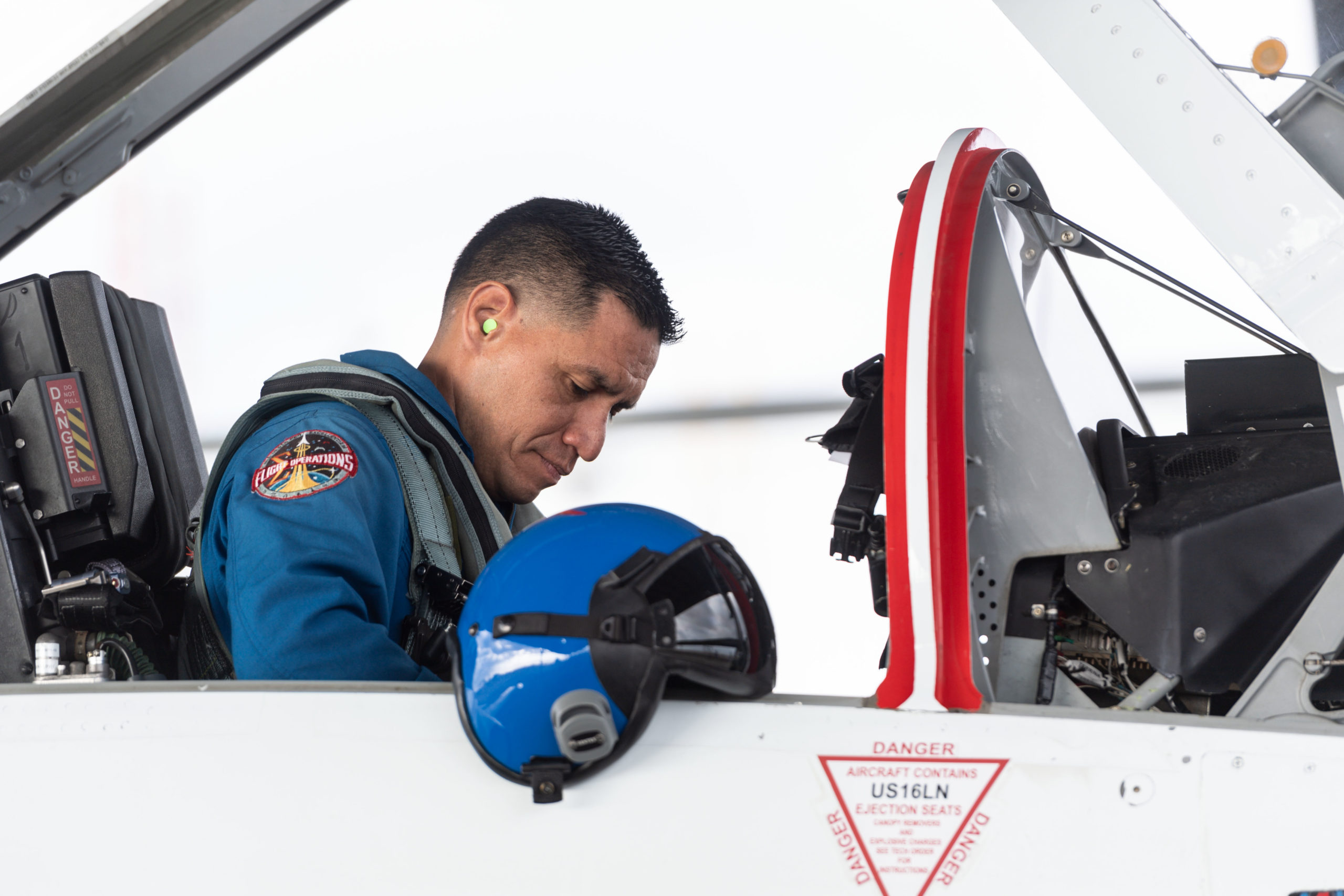
But following the loss of Columbia during her catastrophic STS-107 re-entry in February 2003, NASA began more than a decade of reliance upon Russia, with at least one U.S. astronaut aboard each Soyuz. And when the shuttle fleet retired in July 2011, Soyuz became the principal means of delivering NASA personnel to the outpost.
Russia’s monopoly began to wane in May 2020, when SpaceX’s Crew Dragon came online and regular crew-rotation missions kicked off the following November. But late last year, as Crew-2 prepared for the arrival of their Crew-3 replacements and a “direct handover” of USOS personnel, Mother Nature unexpectedly intervened.
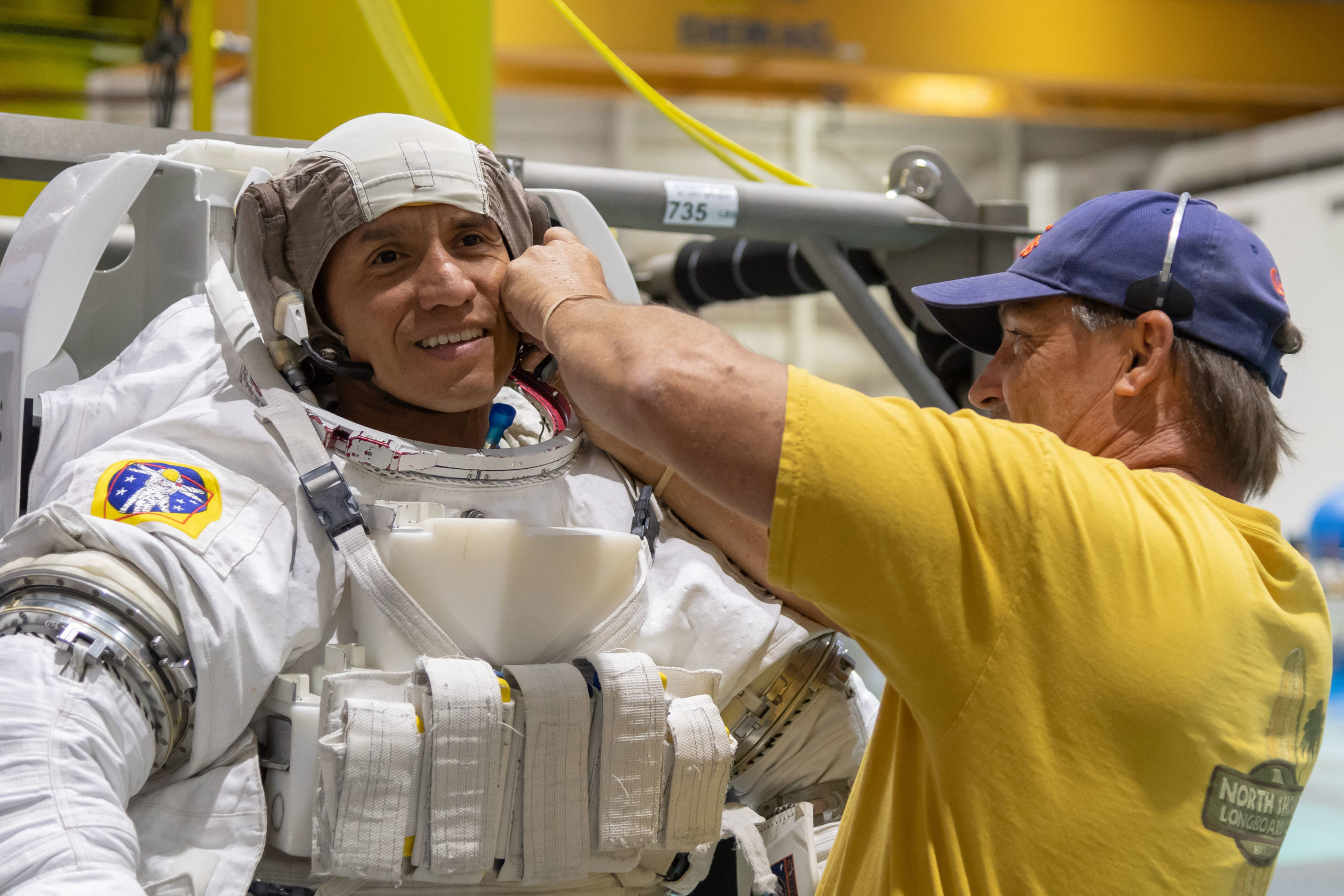
Two weeks of technical and weather delays, together with Crew-2 approaching the maximum on-orbit duration of their Crew Dragon, necessitated a highly undesirable “indirect handover”. As such, Crew-2 departed the station on 7 November, whilst Crew-3 launched three days later and arrived safely at the sprawling orbital outpost on the 11th.
In this instance, there was no absence of U.S. personnel, since NASA’s Mark Vande Hei had launched to the ISS with two Russian cosmonauts aboard Soyuz MS-18 the previous April. But had he not been aboard, the indirect handover of USOS operations from Crew-2 to Crew-3 might have left a highly unwanted gap in U.S. station crewing.
Plans for integrated crew operations, unsurprisingly, had to await Russia’s acceptance of Crew Dragon as a safe and reliable vehicle, but the chances of the agreement bearing fruit hung very much in the balance earlier in 2022, following President Vladimir Putin’s invasion of Ukraine and the resultant to-and-fro of economic sanctions between East and West. Matters were not aided by some particularly bellicose Twitter rhetoric from Roscosmos head Dmitri Rogozin, who was relieved of his post and replaced by Russia’s former deputy prime minister, Yuri Borisov, in July.
On the very day of Rogozin’s departure, NASA and Roscosmos officially inked the long-awaited integrated crew operations agreement. Under its terms, Russia’s Prokopyev and Petelin would be joined by Rubio on Soyuz MS-22.
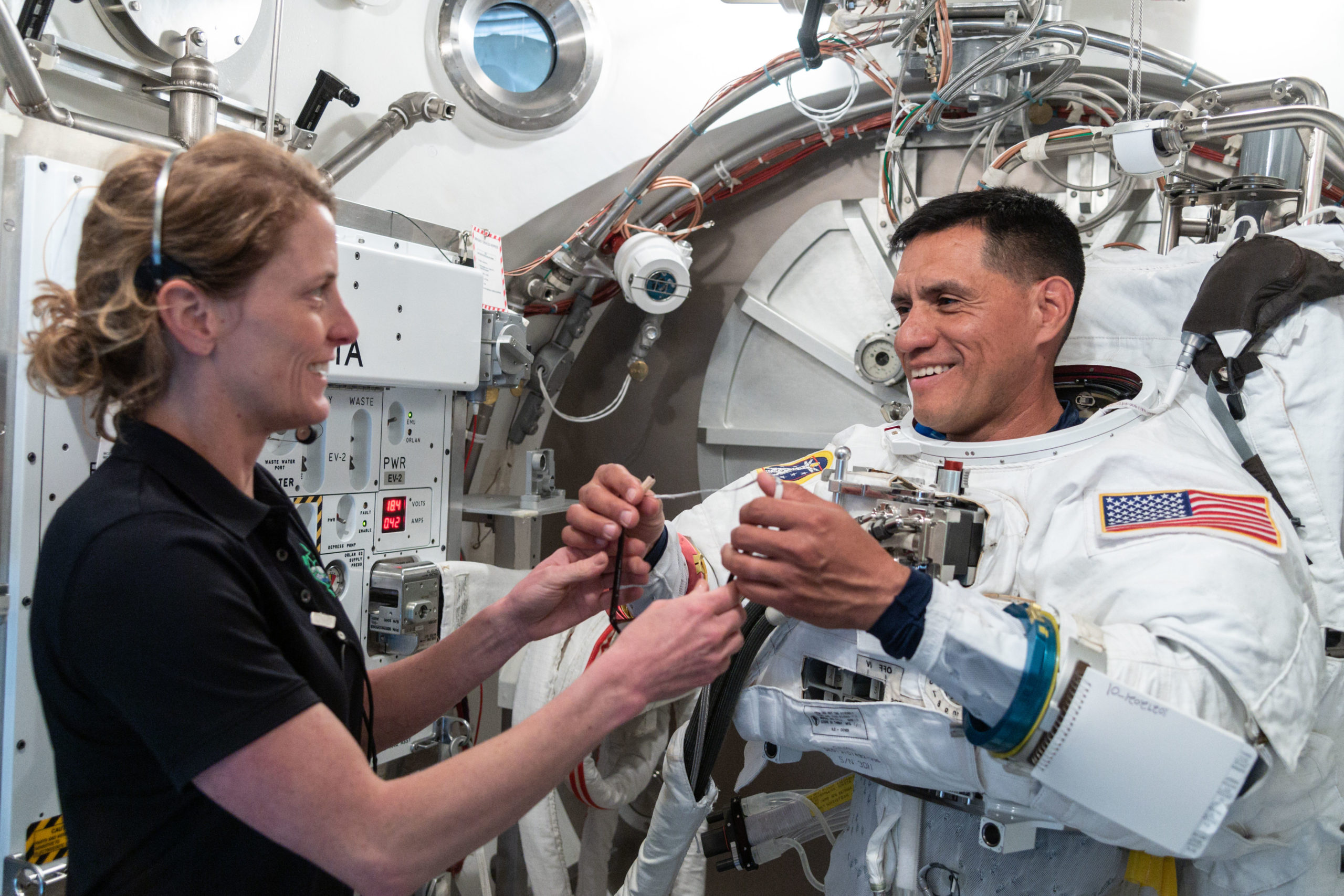
In exchange for Rubio’s place aboard Soyuz MS-22, Russian cosmonaut Anna Kikina will fly alongside U.S. astronauts Nicole Mann and Josh Cassada and Japan’s Koichi Wakata aboard Dragon Endurance for the Crew-5 mission, set to launch from historic Pad 39A at the Kennedy Space Center (KSC) in Florida no earlier than 3 October. Kikina will become Russia’s fifth woman in space, after pioneering Valentina Tereshkova, the first female spacewalker Svetlana Savitskaya, the first long-duration female space station resident Yelena Kondakova and seasoned ISS veteran Yelena Serova.
Earlier this spring, before the integrated crew agreement was confirmed, Rubio and his backup, fellow astronaut Loral O’Hara were pictured participating in Soyuz winter survival and emergency evacuation drills near the cosmonauts’ training center at Star City, on the forested outskirts of Moscow. Together with their respective Russian crewmates, they completed final training exams last month and traveled to Moscow’s Red Square to lay flowers at the Kremlin Wall.
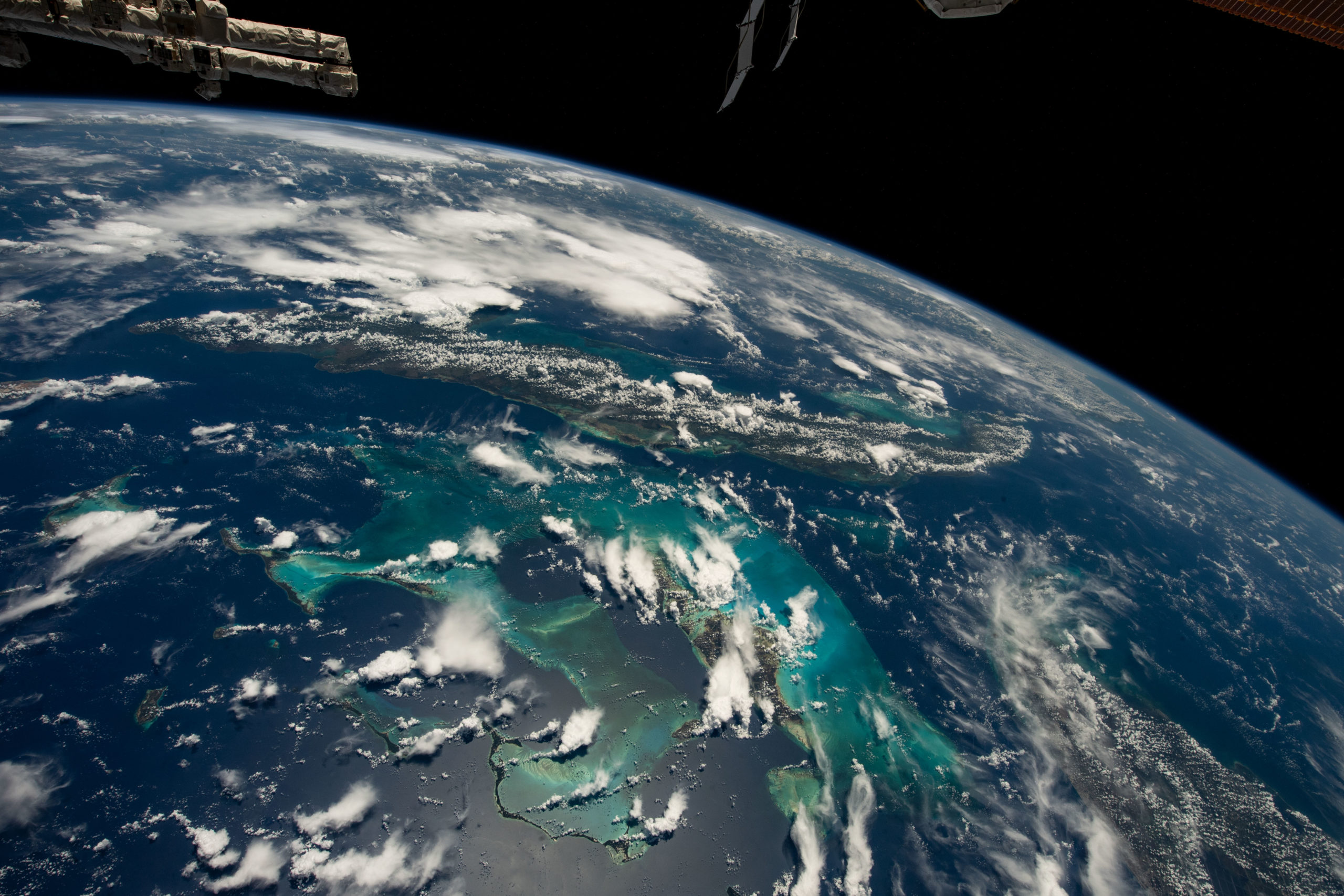
On 5 September, the two crews—the prime crew of Prokopyev, Petelin and Rubio and their backups, Russian cosmonauts Oleg Kononenko, Nikolai Chub and O’Hara—arrived at Baikonur for the final couple of weeks before launch. In accordance with tradition, Petelin and Rubio each planted a tree in the ceremonial Avenue of Cosmonauts. And also in keeping with tradition (and to avert bad luck) only the backup crew was permitted to view Soyuz MS-22 during last weekend’s rollout to the pad.
Tomorrow morning, Prokopyev—a veteran of a six-month ISS mission back in 2018—will assume the center commander’s couch aboard Soyuz MS-22, with Petelin in the Flight Engineer-1 seat on the left side of the cockpit and Rubio in the Flight Engineer-2 seat on the right side. Liftoff is targeted for 9:54 a.m. EDT (6:54 p.m. local time) and it is expected that Soyuz MS-22 will follow a three-hour and two-orbit “fast rendezvous” to reach the space station. Docking is anticipated at 1:11 p.m. EDT.
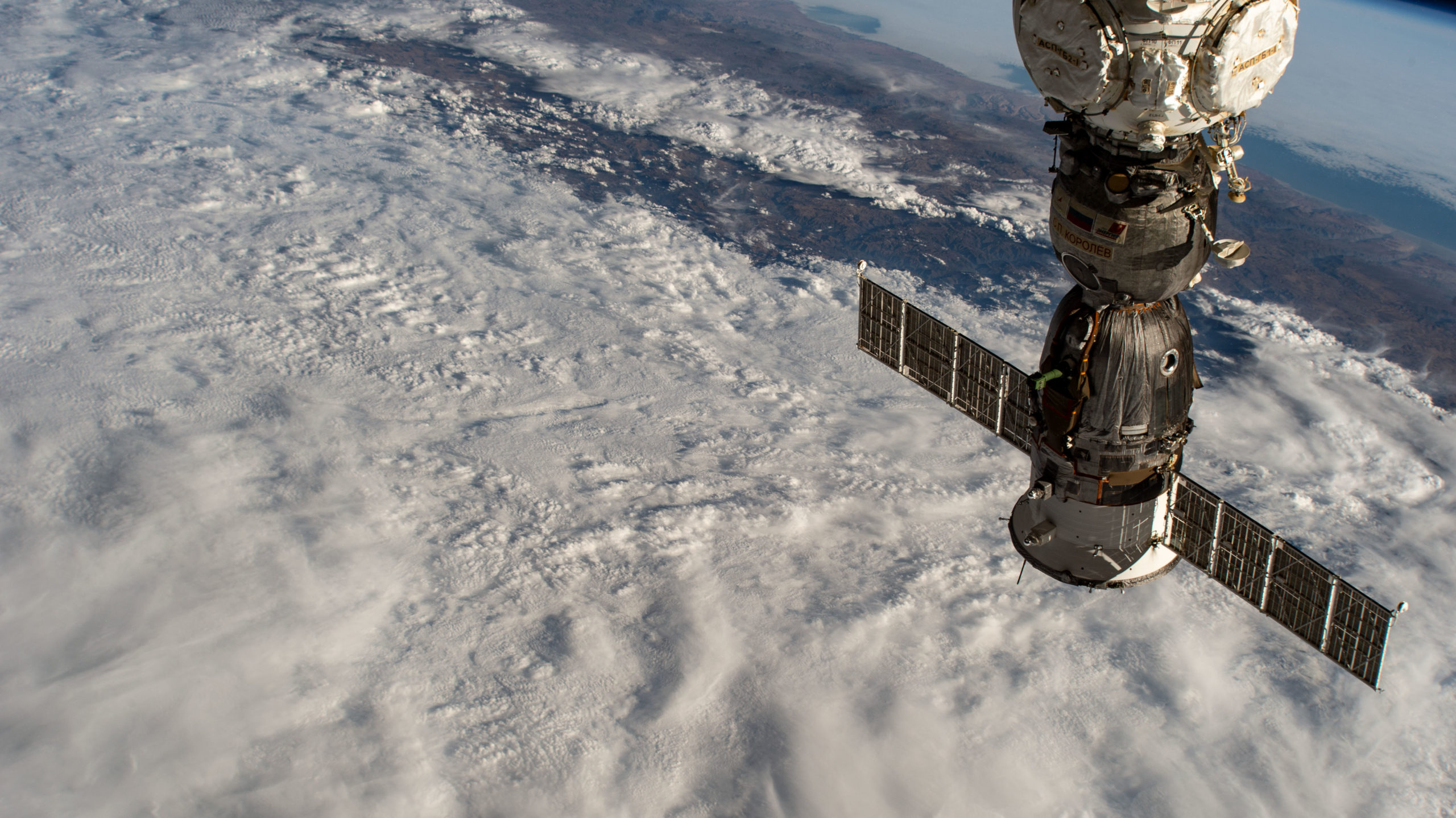
The new arrivals will be welcomed aboard the ISS by Expedition 67 Commander Oleg Artemyev, his Russian crewmates Sergei Korsakov and Denis Matveev, U.S. astronauts Kjell Lindgren, Bob “Farmer” Hines and Jessica Watkins and Italian astronaut Samantha Cristoforetti. Late next week, Artemyev will hand command to Cristoforetti, who becomes the first European woman to helm the station.
Artemyev, Korsakov and Matveev will return to Earth aboard their Soyuz MS-21 craft on 29 September, wrapping up more than 195 days in space. Upon their departure, Expedition 68 will commence, initially under Cristoforetti’s command.
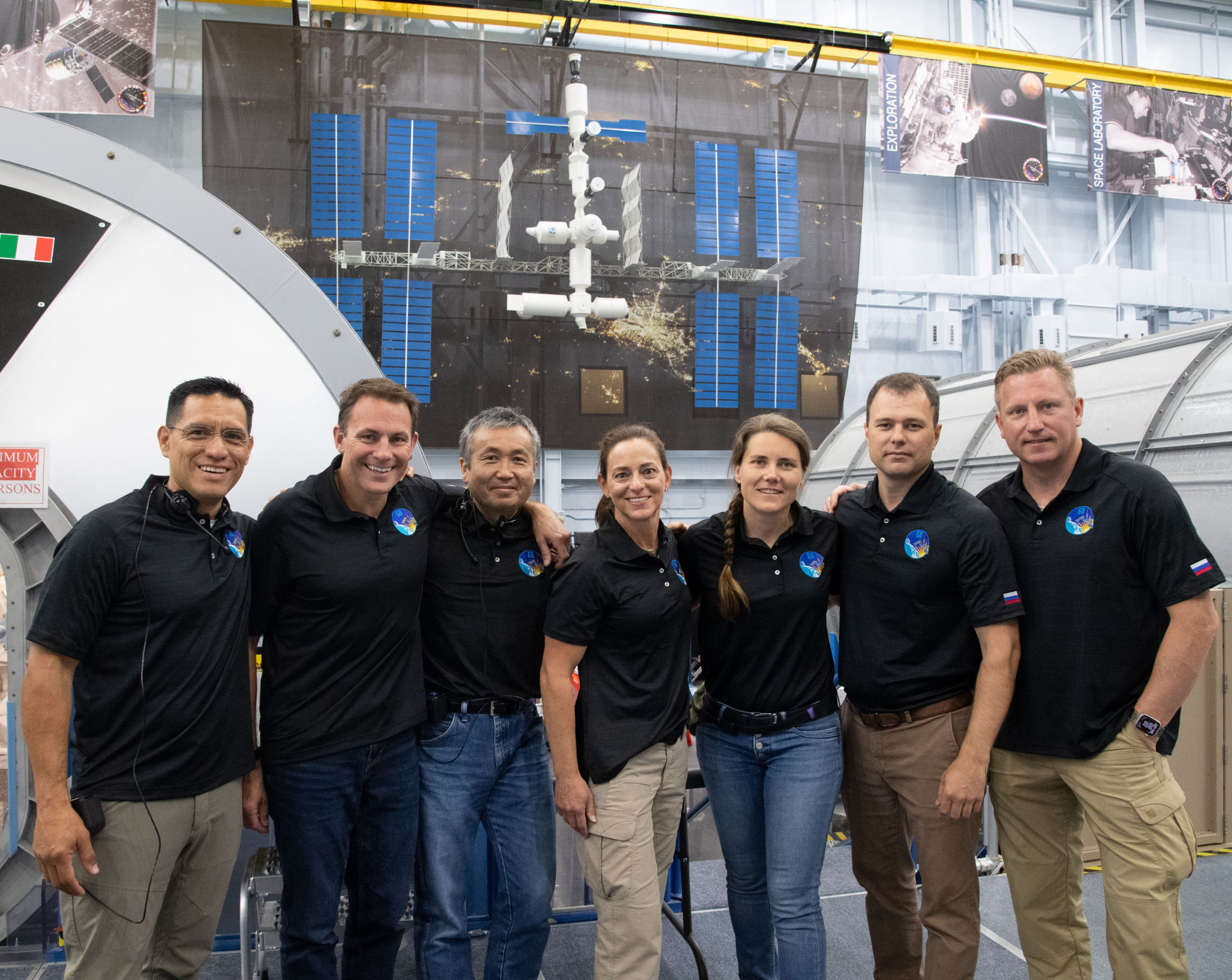
No sooner than 3 October, Dragon Endurance will deliver Crew-5’s Mann, Cassada, Wakata and Kikina to the station. And about five days later Lindgren, Hines, Watkins and Cristoforetti will return to Earth aboard their Dragon Freedom craft, concluding a 5.5-month ISS stay.
With the departure of Cristoforetti et. al., command of the second part of Expedition 68 will pass to Prokopyev, who will lead the ISS through his own return to Earth in late March 2023. And the projected 188-day stay of Prokopyev, Petelin and Rubio is expected to be a busy one for station operations.
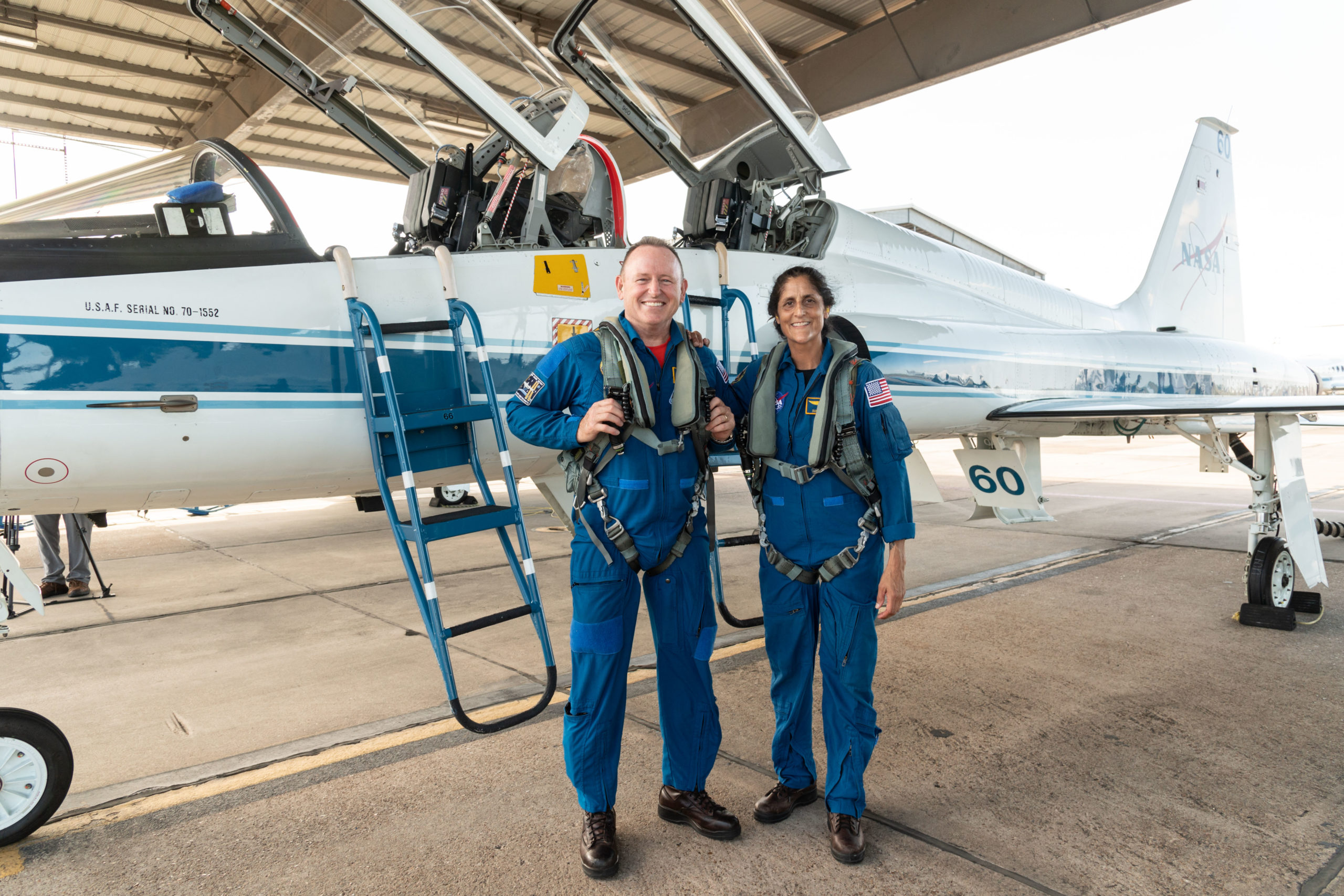
Up to ten crewed and uncrewed visiting vehicles are expected during Expedition 68, including two Russian Progress freighters, two SpaceX Cargo Dragons, two Northrop Grumman Corp. Cygnuses and Japan’s upgraded H-II Transfer Vehicle (HTV-X1). There is also potential for Expedition 68 to welcome NASA astronauts Barry “Butch” Wilmore and Suni Williams when they arrive on the Crew Flight Test (CFT) of Boeing’s CST-100 Starliner and perhaps also the second AxiomSpace mission, commanded by America’s most experienced spacefarer, Peggy Whitson.
And as many as five Russian sessions of Extravehicular Activity (EVA) and perhaps up to four U.S. spacewalks are planned around the end of the year. Their objectives include the continued outfitting of Russia’s Nauka (“Science”) lab, which arrived on station last summer, and the installation of mounting brackets and other hardware associated with the next set of ISS Roll-Out Solar Arrays (iROSAs).




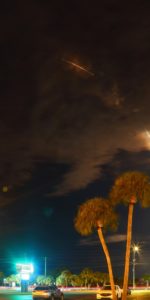
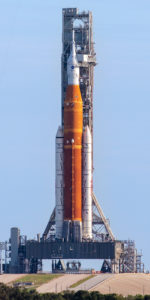
3 Comments
3 Pings & Trackbacks
Pingback:Soyuz MS-22 Arrives at Space Station, as Crew-5 Enters Quarantine - AmericaSpace
Pingback:Crew-5 Ready for Launch, Six-Month Space Station Mission - AmericaSpace
Pingback:Crew-6 Arrives in Florida, Heads for Monday Pre-Dawn Launch to Space Station - AmericaSpace